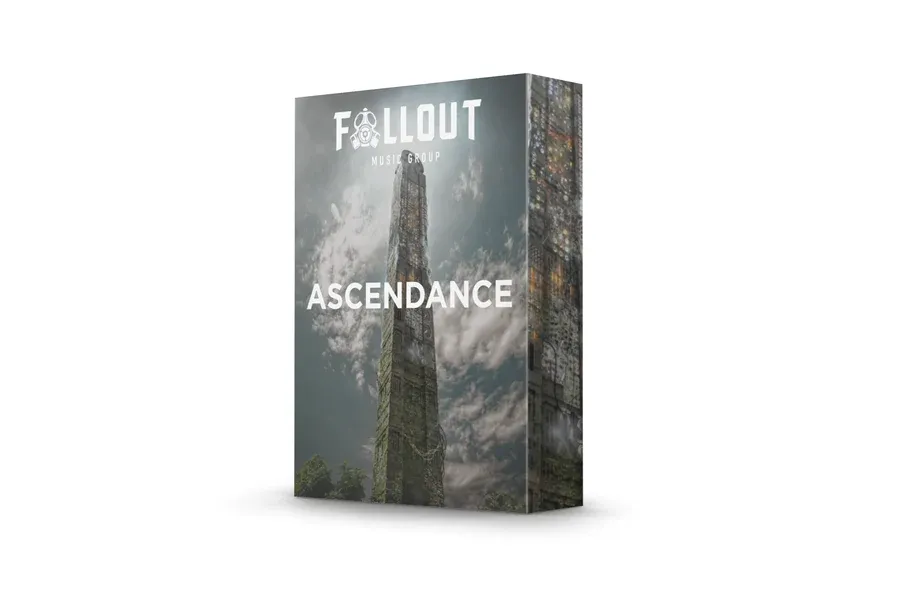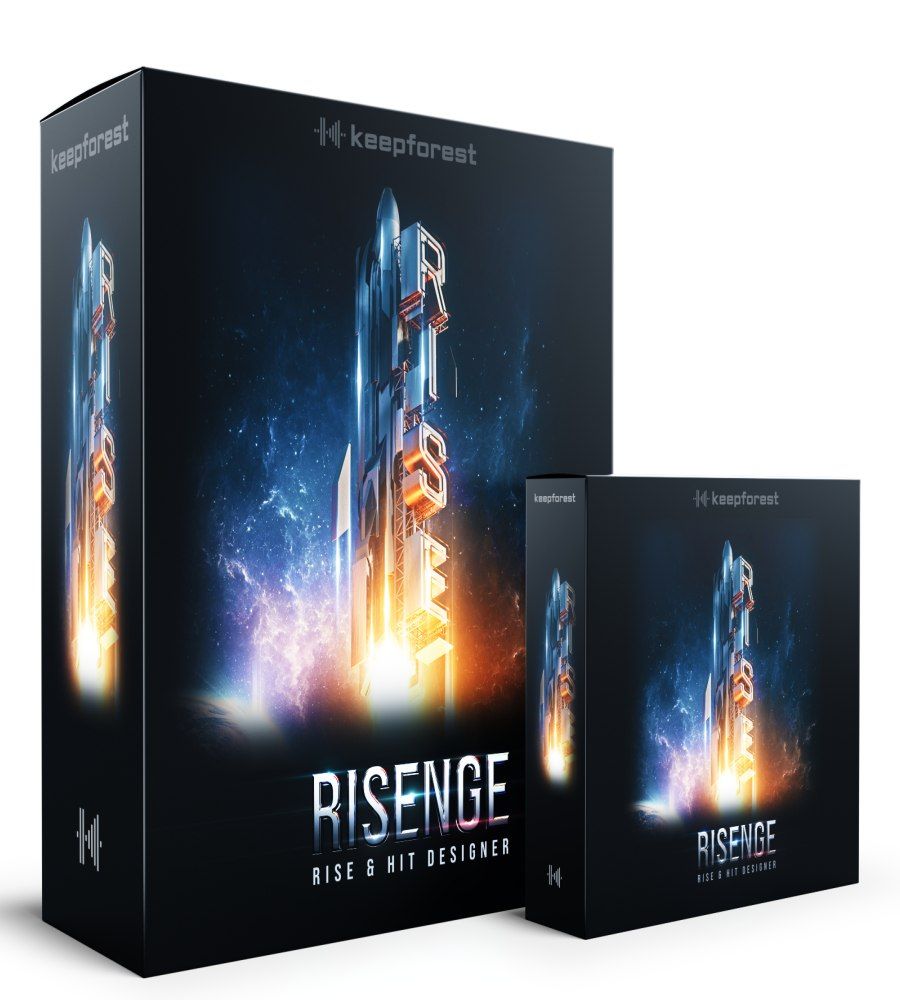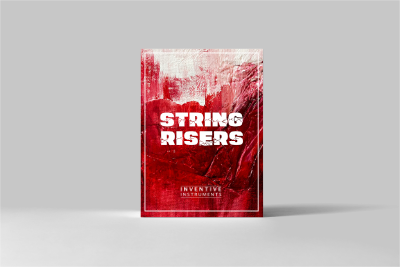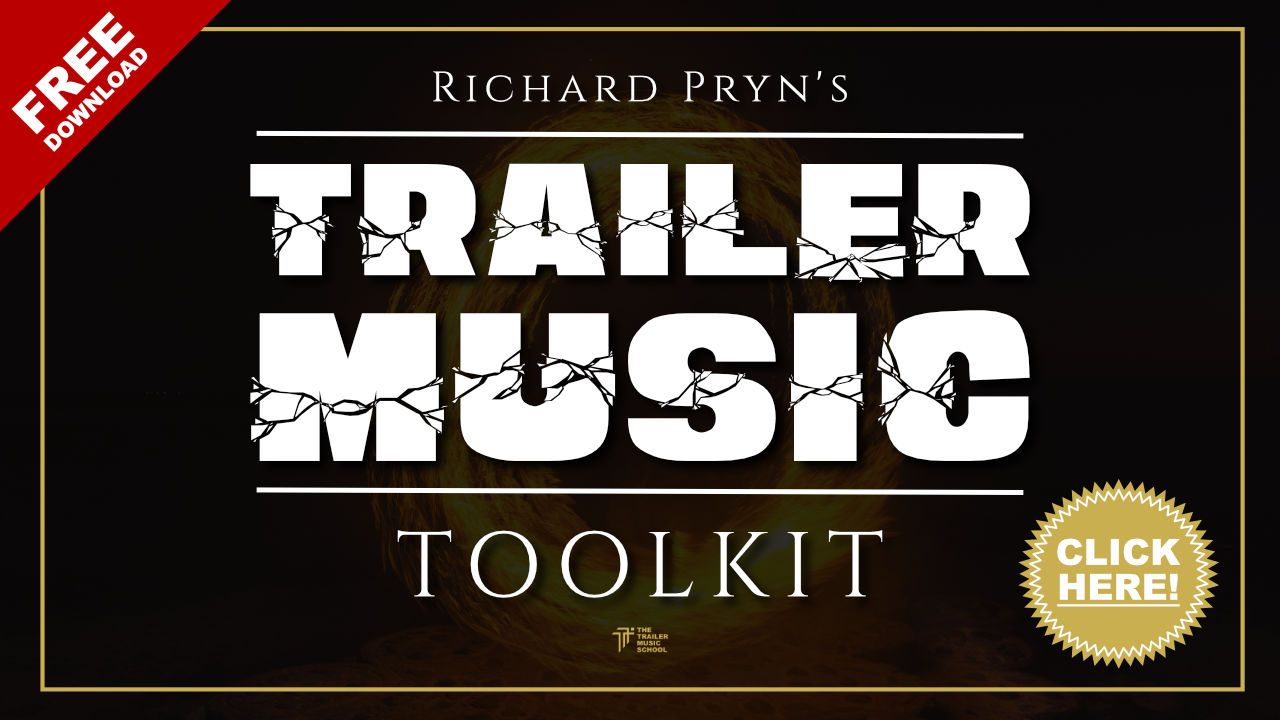What are Risers in music?
Put simply, “risers” are any noise that rises in pitch, volume, or a parameter in modulation or EQ.
They are used extensively in EDM music but are also one of the secret weapons of any cinematic composer.
Risers are part of a collection of sounds called ‘transitions’. These are sounds that are used for transitions between sections or key areas of a piece of music or a film.
Risers are used as an easy way to create one of the most vital elements of all music, tension.
The tension builds as the riser rises (in pitch or volume for example) then when the riser reaches its peak and dissipates the tension is released.
They function in the same way as a cymbal roll (a white noise riser by the way). You use them to build tension into a change.
Why do you even need a riser in your music anyway?
That is a great question and to answer it I want to return to my previous point.
All music is based on this principle; tension and release.
Everything we do as composers and producers center around the dance of tension and release; every chord sequence, every melody, every beat…everything.
But what happens if your music needs more tension?
What do you do if you want to build the tension more and more but don’t want to add any new ostinatos, melody changes, or chord changes?
You add a riser that’s what you do.
How to make your own risers in your music
I am fully aware that you may not have the money right now to fork out for a riser engine or sample pack. Or you may be just like me and feel empowered knowing how things are made.
That’s why I also want to show you how to make your own risers. It’s pretty easy.
1. White noise sweeps
Little did I know when I was listening to all that dance music in the 90s that they were priming my ears to feel comfortable with white noise sweeps.
White noise sweeps are made by taking a white noise generator, synth, or white noise sample and gradually opening filters.
Jargon buster: Filters. This term always confused and scared me but it is simply a way of filtering certain frequencies or characters of a sound where you filter out the sounds you don’t want and let through the sounds you do.
White noise sweeps are great for electronic music or music that has a lot of electronic sounds in it. They tend to stand out in more organic or classical music. I only ever use these sweeps in hybrid tracks where they merge nicely with a filthy synth bass or screechy synth lead.
2. Glissando (live or sampled)
When I was learning the violin, this is one of the only sounds that ever came naturally to me (and that actually sounded half decent).
Glissando is a continuous slide between two notes. They don’t have to be smooth slides like you would expect to hear on a Violin or other fret-less stringed instrument. All they have to be is all the notes between your two chosen notes being sounded. Imagine a harpist sliding their hand along all the strings. That is still a glissando but each note is sounded.
Glissandi (plural of Glissando) can be played fast or slow. Generally, they are played quite fast so as to mask the sound of all the individual notes being sounded to make the slide feel smooth.
These types of risers are great for more organic-sounding tracks where almost all of the instruments are live or “real” (like an orchestra).
I use these extensively in my organic thriller and horror tracks.
3. Tempo Automation
A tempo riser is where the sample you are using speeds up. This usually means that the pitch of the sample goes up too. So you have to think of this one as a twofold riser; a mixture of a speeding-up drumroll and chipmunks progressively talking faster and higher.
As you can imagine, this is a funny one as it can sound kind of funny if not used well.
I like to keep this type of riser nice and short. Treating it more like a short drum roll or drum fill than a long slide. This way any comedy that might arise is almost too quick to hear.
4. EQ Automation (or any other filter sweep)
This is another one that I use all the time. It is essentially the same as a white noise sweep where you open up a filter, in this case, the high-cut filter, but instead of the source audio being white noise it can be whatever you want.
I use this on string sections, drum beats, vocals, and even on other risers. It is so versatile and easy to use it’s absolutely brilliant.

5. Using Endless Smile
This one is new to me but I am just loving it. I was introduced to this by Jon Mohr on my podcast. It’s a little plugin that has an incredibly simple interface (two knobs) that you put on any channel strip. The two knobs are the ‘Smile’ and the ‘gain.
I’m not going to talk about the gain, just the smile.
As you move the smile know you will gradually notice it is a combination of filter sweeps all wound up into one easy-to-use plugin. All you have to do is automate that know and bobs-your-uncle, a riser.
You can even use this on your master bus and it sounds amazing.
6. Pitch Bend
I love a good pitch bend as much as the next person but this isn’t a pitch bend as we know it. This is a pitch bend on drugs.
I usually use a pitch bend to add a “human” quality to melodies or bass lines.
In this instance, the pitch bend is a pitch riser.
The thing about this one is that it does require you to go into your instrument and tweak the amount that your pitch bend will move by. Most pitch bends default to 2 or 3 semitones up or down.
This can work as a riser but it often needs another layer with a bigger scope of movement to really bring it to life. Maybe another pitch riser moving up an octave quickly for example.
To make this pitch riser sound decent on its own you need to change the pitch bend amount to at least 5 semitones. I’d personally recommend between 7-12 to get the best results.
12 semitones is an octave just in case you are wondering.
Anything over an octave tends to sound a bit silly unless you then add an EQ sweep to it as well.
7. Volume Riser
I was in two minds as to whether I would include this on the list on DIY risers but it is technically a rise and is very useful for supplying tension.
The great thing about this is that it is subtle. It builds the tension without it feeling like tension, it just feels like something cool is about to happen. It builds excitement.
All you need to do is automate the volume of your track or tracks to make it seem like you are gradually turning up the volume.
The Best Riser instruments on the planet
Sometimes you just don’t have the time to create your own risers. You just want to click a few buttons and have a beautiful riser straight out of the box. But you want to be able to play it.
I often find myself in this situation and I have several go-to instruments that I reach for to create an awesome-sounding riser very quickly.
Ascendance Risers – Fallout Music Group - Best All Rounder
Ascendance$59.00
I use this instrument all the time for my Act 3 risers. When I need a riser that sounds like a string ensemble and a rocket taking off all making a musical and screaming baby together I use this. It's in your face, aggressive, and very intense!

I’m not going to lie. This is my favorite rise designer on the market for a lot of my trailer music needs.
It’s simple, clear, lightweight, and sounds great. All I really look for is the ability to create great-sounding risers with ease and that doesn’t make my CPU cough and splutter under the weight of the library.
The one downside is it doesn’t allow you to create other effects like whooshes or hits etc. Not a bad thing as it does what it says on the tin.
The Riser by AIR Music technology - Best For Electronic Music
The Riser$113
I absolutely love this instrument for its simplicity and the fact that it covers an area of risers that I would not normally think of; synth-based risers. This fast and incredibly easy-to-use instrument is perfect for electronic music and for more hybrid orchestral stuff where the synth risers can sit naturally with the synths in the track.

Buy NowDisclosure: This is "affiliate links." This means if you click on the link and purchase the item, I will receive an affiliate commission at no cost to you.
For me there are two types of risers; organic ones and electronic ones. Each different type of music calls for one or the other. In this instance, if you are writing any music that has a heavy lean towards the electronic then this instrument, The Riser is perfect.
These synth-based risers sound so authentic and you have so much scope for mucking about with them too.
My favourite thing about this instrument is that no matter the length of the riser you are creating it sounds amazing; no glitches or digital artifacts anywhere.
Risenge Pro by Keepforest - Best For Trailer Music Composers
Risenge Pro $347
As you would imagine, a riser created by Keepforest would sound; huge, bold, brash, and perfect for all types of trailer music. This is an absolute all-rounder that will fit into organic and electronic music alike.

Buy NowThis is an "affiliate links." This means if you click on the link and purchase the item, I will receive an affiliate commission
What Keepforest do well is they know their target audience, Trailer Music composers. That is exactly who this tool is designed for.
The sounds are everything you would hope they would be; larger than life, brilliantly produced, filthy, cinematic, and HUGE!
If you want the “trailer sound” then this is the Riser for you.
String Risers by Me - Best for Horror & Thriller Music
This is my own creation that I made with Trailer Music in mind. It is an orchestra recorded playing risers starting on specific notes. That is it. Despite being so insanely simple this little instrument has completely upgraded so many of my tracks and many other composers' tracks too - this is a beast.

Rich's String Risers
I recorded these samples with a string orchestra in Budapest. The whole idea was to create an amazing-sounding, organic, rich, and interesting string riser that I could use in all of my music. I use this all the time and so do the other trailer composers who have it in their arsenal.
I recorded this using a string orchestra in Budapest. I wanted a sample that I could drop into my tracks that started in key and that would not just bring immediate tension but also give a sense of atmosphere and character.
This riser is absolutely perfect for anything organic, especially if it is aimed at thrillers or horror stuff. This won’t work on lighter-sounding stuff very well but for darker and scary tracks this riser is an absolute beast.
Frequently Asked Questions About Risers
What’s the opposite of a riser in music?
The opposite of a riser in music is called a downer. It sounds like the sound you would hear when a plane was plummeting to the ground. Or even when your washing machine is reaching the end of its spin cycle and slowing down.
What is a riser in live sound?
A riser in live sound is a sound that rises in pitch, volume, and/or a modulation parameter. They add movement, and tension and build to your music with ease and they give your track another dimension.
How do you create a riser in Logic?
The easiest way to create a riser in Logic is to use pitch bend automation. This way you can control how much the riser rises and also how quickly it does it.
How do you create a riser in Abelton?
Similarly to Logic, the easiest way to create a riser is to use the pitch bend automation feature. This will allow you to use the pitch bend within your VST and also control the amount the riser rises and how quickly.
How do you transition music smoothly?
One really quick and easy way to transition music smoothly is to use transition effects (affiliate link); cymbal rolls, whooshes, risers, and swish hits. What these transitions do is let the listener know a change is coming and then emphasize the change quite naturally.

Get my FREE Trailer Music Toolkit
It contains all the One-shots you need to sketch a complete track, and the hugely popular Perfect Trailer Music Cue Blueprint PDF.






